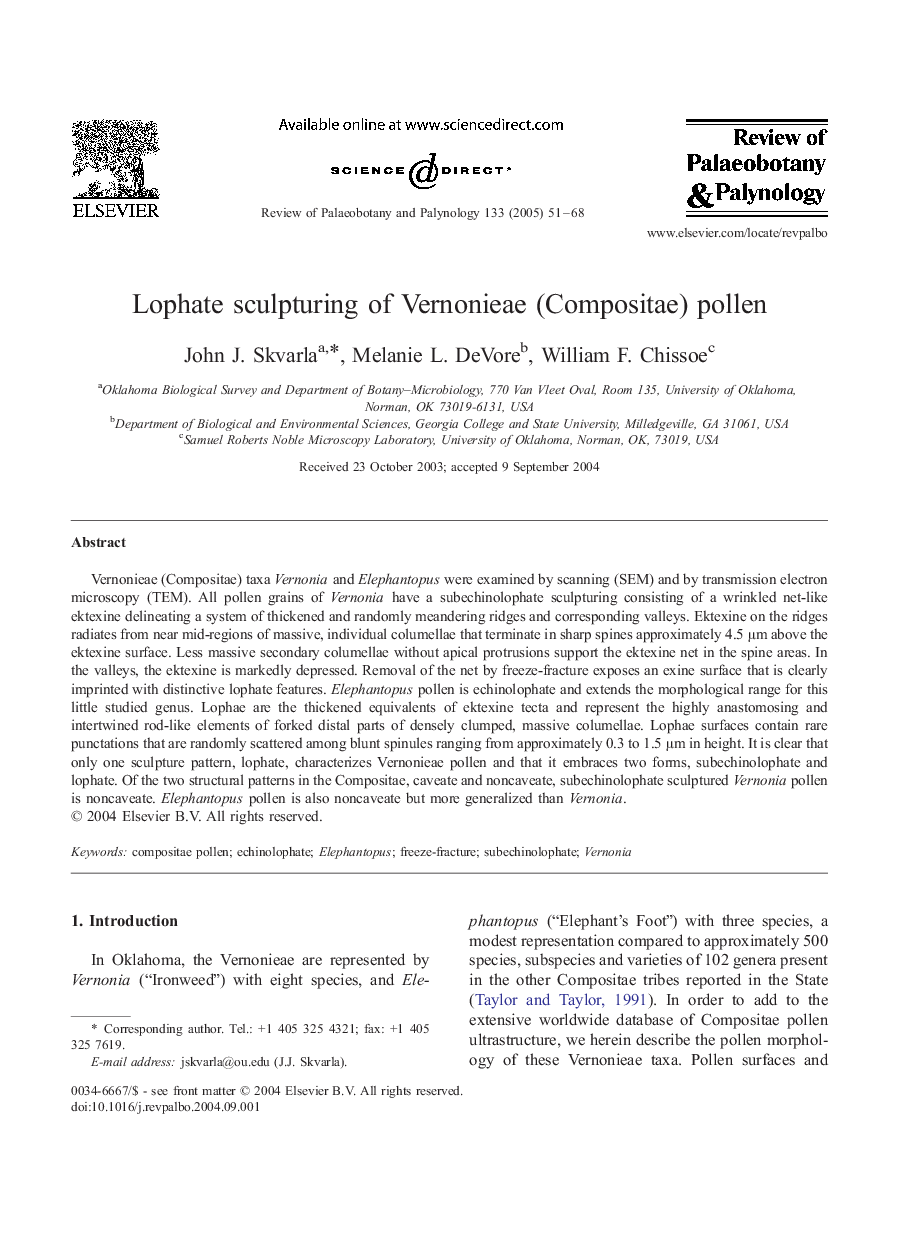| Article ID | Journal | Published Year | Pages | File Type |
|---|---|---|---|---|
| 10122128 | Review of Palaeobotany and Palynology | 2005 | 18 Pages |
Abstract
Vernonieae (Compositae) taxa Vernonia and Elephantopus were examined by scanning (SEM) and by transmission electron microscopy (TEM). All pollen grains of Vernonia have a subechinolophate sculpturing consisting of a wrinkled net-like ektexine delineating a system of thickened and randomly meandering ridges and corresponding valleys. Ektexine on the ridges radiates from near mid-regions of massive, individual columellae that terminate in sharp spines approximately 4.5 μm above the ektexine surface. Less massive secondary columellae without apical protrusions support the ektexine net in the spine areas. In the valleys, the ektexine is markedly depressed. Removal of the net by freeze-fracture exposes an exine surface that is clearly imprinted with distinctive lophate features. Elephantopus pollen is echinolophate and extends the morphological range for this little studied genus. Lophae are the thickened equivalents of ektexine tecta and represent the highly anastomosing and intertwined rod-like elements of forked distal parts of densely clumped, massive columellae. Lophae surfaces contain rare punctations that are randomly scattered among blunt spinules ranging from approximately 0.3 to 1.5 μm in height. It is clear that only one sculpture pattern, lophate, characterizes Vernonieae pollen and that it embraces two forms, subechinolophate and lophate. Of the two structural patterns in the Compositae, caveate and noncaveate, subechinolophate sculptured Vernonia pollen is noncaveate. Elephantopus pollen is also noncaveate but more generalized than Vernonia.
Keywords
Related Topics
Physical Sciences and Engineering
Earth and Planetary Sciences
Palaeontology
Authors
John J. Skvarla, Melanie L. DeVore, William F. Chissoe,
